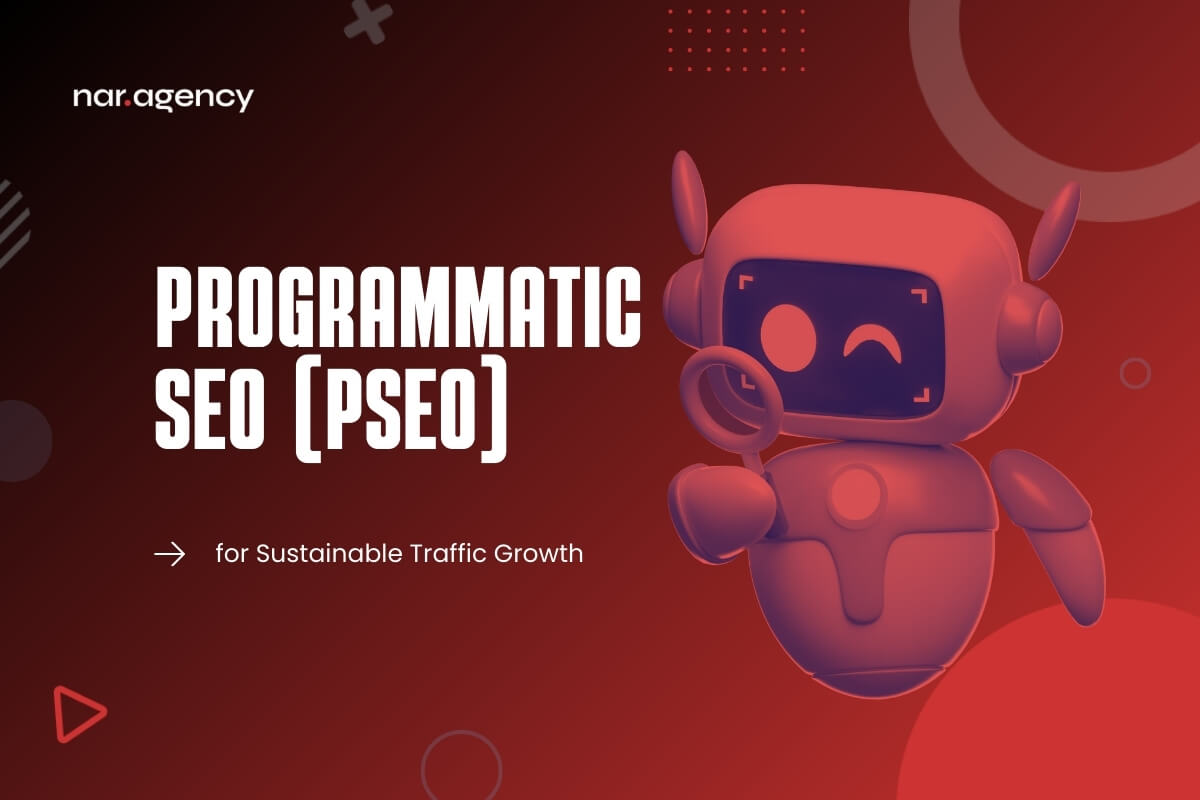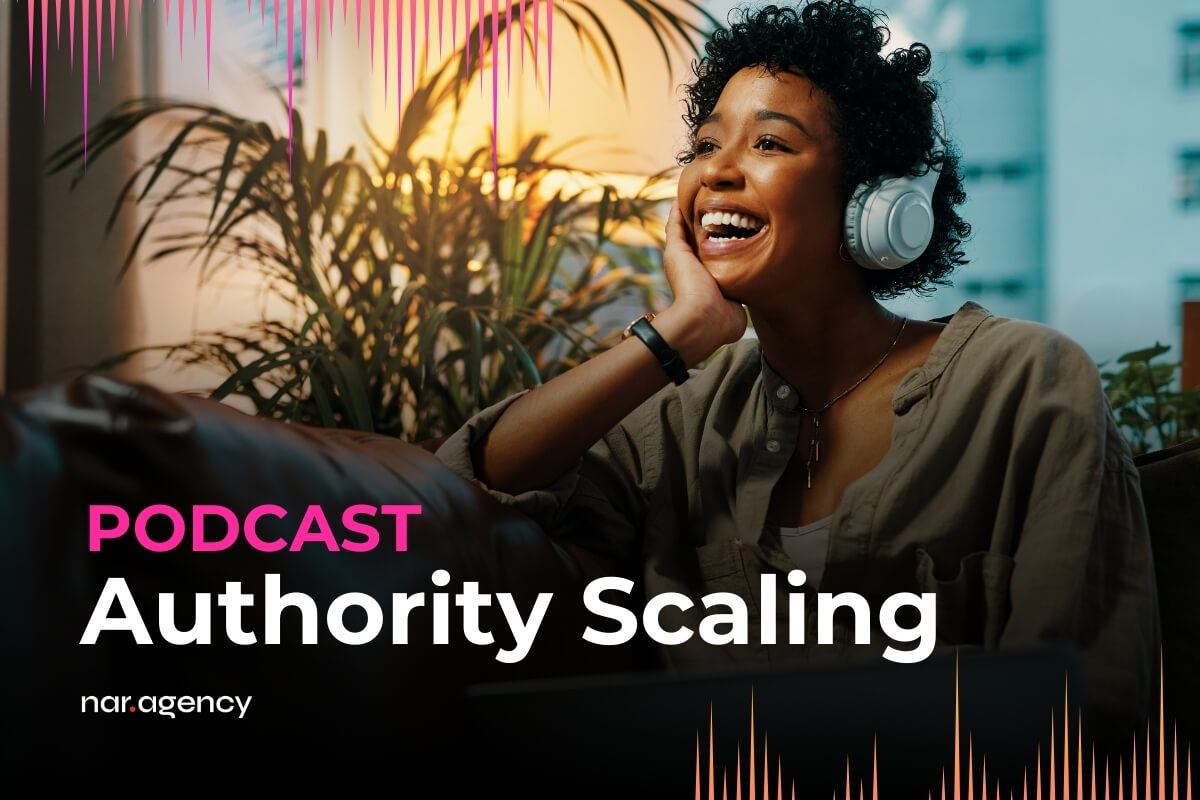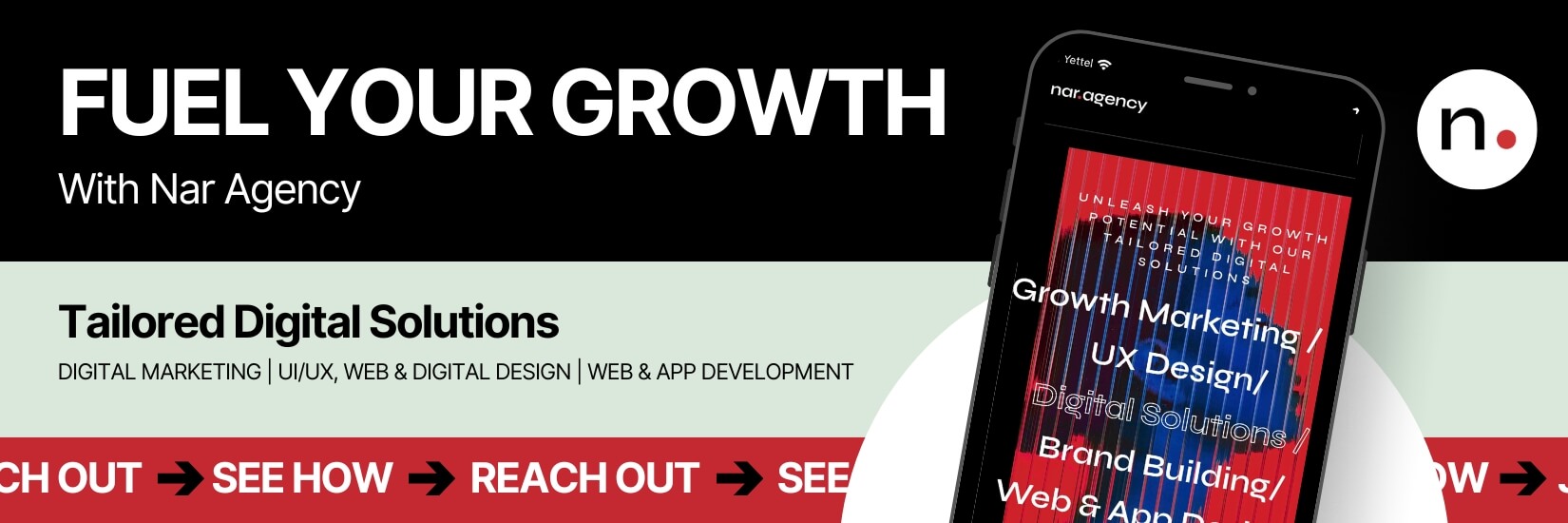Table of Contents
Growth marketing remains essential for companies seeking to scale in 2025. As the digital landscape evolves, businesses must adopt innovative strategies to attract and retain customers. This article explores proven growth marketing tactics driving business expansion this year, including programmatic SEO and AI-powered content marketing. We examine how top companies use these strategies to achieve significant growth.
Key Takeaways
- Programmatic SEO can drive sustainable traffic growth by automating and optimizing large-scale content creation.
- Social media engagement and user-generated content are key to maximizing brand visibility and organic reach.
- AI-assisted content marketing offers personalized experiences and advanced analytics for better performance tracking.
- Podcast authority scaling and strategic appearances can build thought leadership and monetize brand presence.
- Balancing performance marketing with brand building is essential for long-term success and scalable growth.
Growth Marketing Strategies Covered
- Leveraging Programmatic SEO for Sustainable Traffic Growth
- Maximizing Organic Social Stacking for Brand Visibility
- Harnessing AI-Assisted Content Marketing
- Expanding Reach with Podcast Authority Scaling
- Innovating with Performance Creative in Advertising
- Adopting Community-Led Growth Strategies
- Enhancing Customer Lifetime Value through Lifecycle Marketing
- Overcoming B2B SaaS Growth Challenges
- Striking the Right Balance: Performance Marketing vs. Brand Building
- Utilizing Case Studies and Sales Assets for Scalable Growth
1. Leveraging Programmatic SEO for Sustainable Traffic Growth

Understanding the Basics of Programmatic SEO
Programmatic SEO is a sophisticated strategy that involves automatically generating and optimizing large numbers of targeted landing pages at scale. It’s designed to capture long-tail traffic by creating pages for thousands of specific search queries. This approach relies heavily on data-driven decisions and a deep understanding of search engine algorithms.
Key components of programmatic SEO include:
Extensive keyword research focused on long-tail queries
Creation of optimized page templates
Development of a robust content database
Automated page generation
Ongoing optimization and performance monitoring
Unlike traditional SEO, programmatic SEO allows businesses to efficiently target a vast array of niche search terms, significantly boosting overall site visibility and organic traffic.
Implementing Scalable Content Strategies
To achieve sustainable growth through programmatic SEO, it’s crucial to implement scalable content strategies that can adapt to evolving business needs and search trends. This involves:
Identifying key content pillars that align with your brand and customer interests
Developing a flexible page template that can accommodate various content types
Creating a comprehensive database of content variables (e.g., location names, product features, industry-specific terms)
Utilizing automation tools or custom code to generate pages at scale
Implementing rigorous quality control measures to ensure content relevance and uniqueness
Successful implementations, like those by Zapier and Airtable, demonstrate how programmatic SEO can drive significant organic traffic growth by targeting thousands of specific user intents.
Measuring and Optimizing for Long-Term Success
Programmatic SEO requires continuous monitoring and optimization. Key performance indicators (KPIs) to track include:
Search rankings for targeted long-tail keywords
Organic traffic to programmatically generated pages
Indexation rates of new pages
User engagement metrics (e.g., time on page, bounce rate)
Conversion rates from programmatic pages
It’s essential to analyze these metrics regularly and refine your strategy accordingly. This might involve updating page templates, expanding your keyword set, or adjusting your content generation algorithms.
Remember, programmatic SEO is not a set-it-and-forget-it solution. It requires ongoing attention to search trends, algorithm updates, and user behavior changes. By maintaining flexibility and continuously optimizing your approach, you can maximize the long-term success of your programmatic SEO efforts and drive sustainable organic traffic growth.
2. Maximizing Organic Social Stacking for Brand Visibility

Understanding Organic Social Stacking
Organic social stacking is a strategic approach to building a strong social media presence by layering your marketing efforts across multiple platforms in a cohesive manner. This strategy involves not just posting content on different social channels, but actively enhancing your brand visibility by synchronizing your messaging and engaging with your audience where they are most active.
Here are some key components of social stacking:
Consistent Branding: Ensure that your brand image, messaging, and tone of voice are uniform across all platforms. This consistency helps reinforce brand recognition and trust among your audience.
Cross-Promotion: Utilize each social media platform to promote content and engagement on others. For example, you can share a LinkedIn article on your Instagram story or encourage your Twitter followers to check out your latest Facebook Live video.
Tailored Content: While maintaining consistency, tailor your content to suit the unique characteristics and audience preferences of each platform. This might involve using more visual content on Instagram, professional insights on LinkedIn, and conversational tones on Twitter.
Engaging with Your Audience: Actively respond to comments, questions, and messages across platforms to create a dialogue with your audience. Engagement helps build a community around your brand, fostering loyalty and advocacy.
User-Generated Content (UGC): Encourage your followers to create and share content related to your brand. This can amplify your reach and provide authentic social proof that resonates with potential customers.
Why It Matters
By stacking your organic social media efforts, you can create a multiplying effect on your brand visibility. Instead of relying solely on paid advertising, you build a robust ecosystem of engagement that can organically attract and retain followers, increasing your overall reach and impact over time.
Crafting a Cohesive Social Media Presence
When it comes to social media, and branding in general, consistency is king. A cohesive social media presence can significantly amplify your brand’s voice and message, ensuring that your audience receives a unified experience across all platforms. This not only strengthens brand recognition but also fosters trust and loyalty among your followers.
- Identify your brand's core values and ensure they are reflected in every post.
- Develop a consistent visual style, including colors and fonts, to enhance brand recall.
- Craft a content calendar to maintain a steady stream of relevant and engaging posts.
By maintaining a consistent tone and style, you create a familiar and comfortable space for your audience to engage with your brand. This strategic approach can lead to increased engagement, higher conversion rates, and a more robust online community.
Remember that social media is not about broadcasting your message, it’s about creating a dialogue. Engage with your audience by responding to comments, participating in relevant conversations, and showing appreciation for user-generated content. This two-way communication is essential for building a strong, active community around your brand.
Engaging with Your Audience Authentically
Authentic engagement involves nurturing two-way conversations with your audience. Knowing your audience is the cornerstone of this approach. It’s about understanding their demographics, lifestyles, professions, pain points, and goals to tailor your interactions and provide genuine value.
- Figure out where your target audience is most active, such as LinkedIn groups, industry forums, or platforms like Reddit, Slack, and Discord.
- Share insights, answer questions, and contribute useful content that addresses members' needs and interests.
- Encourage customers to share their own experiences and insights, as peer-to-peer interactions can be incredibly valuable for fostering loyalty.
By harmonizing community engagement efforts with your overall marketing strategy, you create a cohesive brand experience that resonates with your audience and supports sustainable growth.
Leveraging community insights for product development not only aligns your offerings with customer needs but also instills a sense of ownership among your buyers. Offering exclusive content and events can further enhance this connection, making your brand an integral part of their personal or professional lives.
Leveraging User-Generated Content and Influencers
In growth marketing, user-generated content (UGC) and influencer partnerships are invaluable for amplifying brand reach and authenticity. UGC can include behind-the-scenes looks, product sneak peeks, or interactive content like polls and quizzes, which not only engage but also empower customers to become brand advocates.
Influencer collaborations are particularly potent, as they leverage the influencer's credibility and audience to reach potential customers in a way that feels genuine and trustworthy. When influencers incorporate your brand into their regular content, they help to build trust with their audience, which can be a significant driver of growth.
Encouraging customers to share their experiences and insights is crucial, as peer-to-peer interactions can foster loyalty and provide valuable feedback. This feedback can be instrumental in aligning your offerings with customer needs and enhancing the user experience.
Below is a list of strategies to effectively utilize UGC and influencers:
Gather User Feedback: Use surveys and social media to understand user preferences and improve offerings.
Hire Influencers: Select influencers who resonate with your brand values and can authentically engage their audience.
Leverage Community Insights: Utilize community feedback for product development and to give customers a sense of ownership.
Offer Exclusive Content: Provide community-specific content and events to encourage active participation and sharing.
3. Harnessing AI-Assisted Content Marketing

Integrating AI Tools for Content Creation
The integration of AI tools in content creation marks a revolutionary shift in digital marketing strategies. As a key growth marketing strategy, AI-driven content creation allows businesses to scale their content efforts rapidly and efficiently. By leveraging machine learning algorithms, businesses can produce a wide array of content, from blog posts to social media updates, tailored to their audience’s interests and behaviors.
AI tools can assist in several key areas:
Content Personalization: Crafting messages that resonate with individual users based on their data.
SEO Optimization: Generating SEO-friendly content that ranks higher in search engine results.
Language Translation: Expanding global reach by translating content into multiple languages.
Data Analysis: Gleaning insights from content performance to refine future strategies.
Content Ideation: Generating topic ideas and content outlines based on trending subjects and user interests.
The table below highlights the impact of AI on key content metrics:
| Metric | Without AI | With AI |
|---|---|---|
| Production Speed | Moderate | High |
| Content Relevance | Variable | Consistent |
| Engagement Rates | Standard | Improved |
| SEO Rankings | Competitive | Superior |
| Scalability | Limited | Highly Scalable |
The impact of AI on content marketing is significant. According to a 2024 survey reported by Narrato, 80% of marketers believe AI will play a critical role in content marketing strategies over the next five years. The same report highlights that 47% of marketers are already using AI for content creation, demonstrating the rapid adoption of this technology in the field.
Personalizing User Experience with AI
In the realm of growth marketing, personalization is the cornerstone of user engagement. AI-driven personalization tailors the user experience to individual preferences and behaviors, leading to a more immersive and meaningful interaction. This can manifest in various forms, such as personalized recommendations, customized content, and targeted messaging.
Personalization is a crucial growth marketing strategy, with McKinsey reporting that personalization can deliver five to eight times the ROI on marketing spend. To harness the power of AI for personalization:
- Leverage user data and analytics to identify personalization opportunities.
- Integrate user-generated content to build social proof and enhance trust.
- Employ AI to automate and refine personalization tactics over time.
- Implement predictive personalization to anticipate user needs and preferences, enhancing the overall customer experience.
AI algorithms can analyze user behavior in real-time, allowing for dynamic content adjustments that keep users engaged and increase conversion rates. By creating personalized experiences that resonate deeply with users, businesses can foster loyalty and drive sales growth.
The future of UI/UX is undeniably personalized, with AI enabling designers to create interfaces that adapt and evolve with the user, ensuring a seamless and engaging experience. This level of personalization not only improves user satisfaction but also contributes significantly to achieving growth marketing objectives.
Unlock Your Business's Growth Potential
Ready to implement these game-changing strategies?
Our expert team at Nar Agency can help you create a tailored growth plan.
👉 Book Your Free 30-Minute Growth Strategy Session Now!
No obligations. Just pure value for your business.
Tracking Performance with Advanced Analytics
In AI-assisted content marketing, tracking performance with advanced analytics is pivotal for understanding the effectiveness of your growth marketing strategies. AI-powered analytics tools use machine learning to provide predictive insights, helping identify future trends and opportunities for growth. By leveraging these tools, marketers can gain deeper insights into their campaigns’ performance and make data-driven decisions.
To truly excel in growth marketing, it’s essential to:
Look beyond surface-level reporting and delve into data insights that reveal the drivers of growth. This involves tracking lead quality, conversion rates, churn, and lifetime value, and attributing growth to specific marketing actions.
Leverage AI for real-time campaign optimization, allowing for immediate adjustments to marketing strategies based on performance data.
Utilize AI-driven attribution models to accurately measure the impact of each marketing touchpoint, enabling more effective budget allocation across channels.
Continuously optimize your strategies. No strategy remains optimal forever. Marketers must monitor market responses and the incremental lift of each initiative. This allows for doubling down on successful programs and withdrawing from unsuccessful ones, thereby improving the return on investment.
Maintaining agility in your analytics approach is crucial. As the market and your business evolve, so should your analytics strategies. This balance ensures that your marketing mix drives both immediate results and long-term brand equity, contributing to sustainable business growth.
4. Expanding Reach with Podcast Authority Scaling

Identifying Strategic Podcast Opportunities
Podcasts are a powerful growth marketing strategy for scaling your business. Success depends on strategically selecting shows that align with your brand and target audience. Effective growth marketing strategies focus on connecting with the right listeners, not just reaching large number.
To leverage podcasts for business growth:
Target shows with audiences matching your ideal customers
Check listener demographics and engagement metrics
Evaluate host compatibility with your brand message
Prioritize quality of audience over quantity
When pitching:
Highlight mutual benefits
Showcase your unique insights or expertise
Propose specific talking points relevant to the show’s audience
Remember: A single appearance on the right podcast can be more valuable than multiple spots on less relevant shows. Focus on quality partnerships that can genuinely amplify your message and drive growth.
Building Thought Leadership through Podcasting
Podcasting offers a unique platform for establishing thought leadership in your industry. By sharing your expertise and insights, you can connect with your audience on a deeper level and position yourself as a go-to resource.
Step 1. Get Booked as a Guest: Start by appearing on relevant podcasts to share your knowledge and perspectives. This exposure can help you build credibility and a following.
Step 2. Create Valuable Content: Focus on delivering content that addresses the pain points and interests of your target audience.
Step 3. Engage with Listeners: Encourage feedback and discussions to foster a community around your brand.
By consistently providing value and engaging with your audience, you can cultivate a loyal listener base that trusts your insights and looks to you for guidance.
Remember, the key to successful podcasting is not frequency, but the quality and relevance of the content you provide. Tailor your episodes to reflect the latest trends and challenges in your field, and don’t be afraid to share your unique perspective.
Monetizing Podcast Appearances for Business Growth
Podcast appearances offer a unique opportunity for businesses to tap into new audiences and generate revenue. One of the most straightforward ways podcasts monetize is through sponsorships and ads. With a dedicated listenership, podcasts can attract brands willing to pay for exposure to their niche audience.
Businesses can also leverage podcast appearances to promote their own products or services, effectively turning each episode into a marketing opportunity.
Here are some additional strategies for monetizing podcast appearances:
Offering exclusive content or services to podcast listeners
Using podcast episodes to drive traffic to a website or landing page
Collaborating with other podcasters for cross-promotion
Hosting live events or webinars in conjunction with podcast episodes
By strategically aligning podcast content with business goals, companies can create a new revenue stream while enhancing their brand’s reach and authority.
5. Innovating with Performance Creative in Advertising

Developing High-Impact Creative Campaigns
When it comes to performance creative, the development of high-impact campaigns is essential for capturing audience attention and driving conversions. Transactional Brand Building is a growth strategy that embodies this approach, aiming to achieve both sales and branding goals without compromise.
Successful creative campaigns can lead to significant improvements in key metrics:
- Increased sales growth
- New customer acquisition
- Enhanced web traffic and engagement
By leveraging media, strategy, and analytics effectively, businesses can scale their brands and ensure that creative efforts contribute directly to growth metrics. For example, a study by Nielsen found that creative quality can drive 47% of sales changes attributable to advertising.
Finding the right balance between performance marketing and brand building is crucial for achieving sustainable growth. Adapting your strategy as your business evolves allows for a marketing mix that drives both immediate results and long-term brand equity.
Testing and Learning from Creative Performance
In growth marketing, continual experimentation with creative elements is crucial for success. Top growth marketers obsessively test and refine their ad copy, visuals, and calls-to-action based on real-time performance data. This iterative approach allows them to rapidly identify what resonates with their target audience and drives conversions.
A/B testing is a cornerstone of effective growth marketing strategies. By methodically comparing creative variations, marketers can make data-driven decisions that significantly boost campaign performance. For example, a growth marketing team might test:
- Different value propositions in ad headlines
- Varied color schemes or layouts for landing pages
- Multiple CTAs to determine which drives the most clicks
- Diverse imagery or video content to gauge audience engagement
The key is to focus on testing elements that can meaningfully impact your growth metrics. Small tweaks rarely move the needle – instead, test bold variations that challenge your assumptions about what works.
Here are some steps to ensure effective testing:
- Define clear objectives for each test.
- Use a structured approach to create variations.
- Implement robust tracking to measure performance.
- Analyze results to identify winning elements.
- Apply learnings to future creative endeavors.
Remember, growth marketing is all about rapid learning and scaling what works. Implement a structured testing process, but stay agile enough to quickly double down on winning creative approaches as you discover them.
Balancing Brand and Performance for Optimal Growth
In the quest for sustainable growth, the interplay between performance marketing and brand building is pivotal. While performance marketing focuses on immediate results through measurable actions, brand building invests in the long-term equity of your business. The challenge lies in allocating your budget to support both strategies effectively, with the sweet spot typically being a 60/40% ratio between performance marketing and brand building.
The right balance is not static; it evolves with your business and market dynamics. It’s essential to continuously assess and adjust your marketing mix to stay aligned with your objectives.
To effectively balance performance marketing and brand building:
Set measurable goals:
Performance: e.g. “Increase lead generation by 25% in Q3”
Brand: e.g. “Improve brand recall from 35% to 50% among target audience”
Allocate budget based on current priorities:
Early-stage: 70% performance / 30% brand
Growth stage: 50% / 50%
Mature: 40% performance / 60% brand
Track key metrics:
Performance: CAC, conversion rates, ROAS
Brand: Share of voice, sentiment, consideration
Gather actionable insights:
Conduct quarterly customer surveys
Analyze competitor positioning
Review industry benchmark reports
Implement a testing framework:
A/B test ad creative and messaging
Experiment with channel mix
Measure impact on both short and long-term KPIs
Remember, there is no universal formula for the perfect balance. It’s a strategic decision that should be tailored to your business’s unique needs and market position.
6. Adopting Community-Led Growth Strategies

Building and Nurturing Online Communities for Growth
Community-led growth has emerged as a powerful strategy for scaling businesses, particularly in the B2B SaaS space. By fostering engaged communities, companies can accelerate user acquisition, improve retention, and drive product-led growth.
Key benefits of community-led growth include:
Reduced customer acquisition costs through word-of-mouth referrals
Increased customer lifetime value through stronger engagement and loyalty
Valuable product feedback and ideas for innovation
User-generated content that aids in marketing and support efforts
To implement a community-led growth strategy:
Identify your community’s purpose and align it with business goals
Choose the right platform (e.g., Slack, Discord, or a custom forum)
Develop a content and engagement strategy to keep members active
Recruit and train community moderators
Integrate community insights into product development and marketing efforts
Case Study: Notion’s community-led growth strategy helped them reach a $10 billion valuation. By nurturing a vibrant user community, they’ve created a powerful engine for product adoption, feature ideation, and brand advocacy.
Metrics to track community-led growth:
Member growth rate
Active user percentage
User-generated content volume
Community-driven feature requests implemented
Revenue attributed to community members
While building a thriving community takes time, the long-term benefits for sustainable growth are substantial. By making community-building a core part of your growth marketing strategy, you can create a competitive advantage that’s difficult for competitors to replicate.
Transform Your Business with Proven Growth Tactics
Don’t let these strategies remain just ideas. Let Nar Agency help you turn them into real-world results.
✅ Customized growth plan
✅ Expert implementation support
✅ Measurable ROI
👉 Claim Your Free Growth Strategy Session Now!
Limited slots available. Act now to secure yours!
Leveraging Community Feedback for Product Development
Incorporating community feedback into product development is a strategic move that aligns your offerings with customer expectations and fosters a sense of ownership among users. By capturing feedback early, you can uncover customer pain points and ensure your product-market fit is on target.
Capture feedback early to uncover customer pain points
Identify product-market fit with user feedback
Encouraging peer-to-peer interactions within your community not only enhances the feedback loop but also strengthens customer loyalty. Utilize various channels such as in-app surveys, social media, and direct communications to gather this invaluable input.
By actively listening to your community, you can make informed decisions that resonate with your users and drive product innovation.
Creating Advocacy Programs to Drive Growth
Advocacy programs are a natural extension of community-led growth strategies and a potent tool for business expansion. They harness the enthusiasm of your most engaged community members, transforming them into vocal supporters of your brand. These programs are a cornerstone of a robust growth marketing strategy, as they encourage organic sharing and recommendations, which can significantly amplify your marketing efforts.
By leveraging the trust and credibility that comes from genuine customer endorsements within your community, businesses can accelerate their growth, fostering a network of brand advocates who are invested in the success of the company.
To implement an effective advocacy program within your community, consider the following steps:
Identify and segment your most active and satisfied community members.
Create exclusive offers or incentives for advocates.
Provide easy-to-use tools for sharing and referrals.
Recognize and reward the most active advocates within the community.
Remember, effective growth marketing is not just about the strategies you employ, but also about the relationships you build with your customers through your community. Advocacy programs are a testament to the power of community-led growth in driving sustainable business expansion.
7. Enhancing Customer Lifetime Value through Lifecycle Marketing

Mapping the Customer Journey for Better Engagement
Understanding the customer journey is pivotal for enhancing engagement and ultimately driving sales. By mapping out each touchpoint, businesses can identify opportunities to add value and foster deeper connections with their audience. This process involves analyzing the stages from awareness to purchase and beyond, ensuring that every interaction is optimized for the customer’s needs and preferences.
Mapping the customer journey allows for a strategic approach to customer interactions, enabling personalized experiences that resonate with the target audience.
To effectively map the customer journey, consider the following steps:
- Identify key customer personas and their unique paths to purchase.
- Outline the stages of the customer journey, including awareness, consideration, decision, and post-purchase.
- Pinpoint critical touchpoints where customers interact with your brand.
- Analyze data to understand customer behavior and preferences at each stage.
- Implement feedback loops to continuously refine the journey based on customer insights.
By taking these steps, businesses can create a seamless and engaging customer journey that not only meets but exceeds customer expectations, leading to increased loyalty and customer lifetime value.
Implementing Retention Strategies to Boost LTV
To maximize Customer Lifetime Value (CLV), keep customers engaged and satisfied over time. Personalized messaging, targeted promotions, and loyalty programs are key components of a strong retention strategy. By nurturing existing relationships, businesses can drive long-term revenue growth and profitability.
Retention is not just about keeping a customer; it’s about continuously providing value that resonates with their evolving needs. This approach ensures that customers remain active and reduces the likelihood of churn.
Here are some best practices to consider for boosting LTV through retention strategies:
- Monitor customer health scores to identify at-risk customers early.
- Offer flexible pricing and plans to accommodate different customer needs.
- Delight customers with outstanding service and proactive engagement.
- Implement feedback to show customers that their opinions matter.
- Invest in loyalty programs to encourage repeat business and referrals.
- Uncover opportunities to upsell and cross-sell within existing accounts.
Email marketing remains a cornerstone of effective customer retention strategies. Through advanced segmentation and personalized automation, businesses can craft targeted campaigns that significantly boost engagement and customer lifetime value. Studies have shown that well-executed email marketing strategies can increase customer engagement by up to 300%, making it a vital tool for retention marketing.
Utilizing Cross-Sell and Up-Sell Techniques Effectively
To maximize customer lifetime value, balance acquisition with strategies that drive repeat purchases. Cross-selling and up-selling are key techniques for increasing customer value over time.
Cross-selling involves suggesting related or complementary products to customers based on their current purchase history.
Up-selling encourages customers to purchase a more expensive or upgraded version of the item they’re considering.
Implementing these strategies, businesses can deepen customer relationships and increase revenue without the high costs associated with acquiring new customers.
To ensure these techniques are applied effectively, it’s important to have a structured sales process that includes training for sales and account management teams. They should be adept at identifying opportunities for cross-selling and up-selling, and at delivering personalized recommendations that resonate with the customer. Implementing robust sales enablement materials can significantly enhance your team’s ability to execute these strategies effectively, providing them with the tools and knowledge needed to maximize every customer interaction.
8. Overcoming B2B SaaS Growth Challenges

Supporting Longer Customer Journeys with Tailored Content
In the current economic climate, where software spending is scrutinized, supporting longer customer journeys with tailored content has become a pivotal challenge for B2B SaaS companies. Marketers are urged to reassess and optimize customer journeys to align with today’s discerning buyers.
By deeply understanding customer pain points and regularly updating customer profiles, businesses can craft personalized messaging that resonates and differentiates their brand.
Segmentation plays a crucial role in tailoring content effectively. Here’s a simple framework to consider:
- Identify key customer personas and stakeholders.
- Understand their unique challenges and behaviors.
- Develop targeted content that addresses specific stages of the customer journey.
As acquisition costs soar, the focus shifts from broad growth to nurturing existing customer relationships. Sharing insights across teams ensures that community engagement and demand generation strategies are in harmony, fostering a cohesive approach to lifecycle marketing and retention.
Differentiating in a Competitive Landscape
In the crowded B2B SaaS market, standing out is more important than ever. Buyers are overwhelmed with choices, and generic messaging won’t cut it. To truly differentiate, you need laser-focused messaging that speaks directly to the pain points of specific buyer segments.
Here’s how to uncover those golden insights:
Deep-Dive Competitor Analysis: Don’t just list your competitors; dissect their strategies. Use tools like Moz, Semrush, or/and SpyFu to analyze:
Keywords: What keywords are they ranking for? What does this tell you about their target audience and positioning?
Content Strategy: What kind of content are they creating? What are their top-performing articles or blog posts?
Social Media Engagement: Where are they most active? What’s the sentiment around their brand?
SWOT Analysis – With a Twist: Go beyond the standard SWOT analysis. Identify your competitors’ weaknesses and turn them into your opportunities. For example, if a competitor lacks a self-service option, highlight your easy onboarding process.
Craft Hyper-Targeted Messaging: Use the insights from your analysis to develop messaging that resonates with specific buyer segments. Highlight the benefits that matter most to them and address their unique pain points.
Remember: Differentiation isn’t about being different for the sake of it. It’s about clearly communicating why your solution is the best fit for a specific target audience.
Focusing on Retention as a Growth Strategy
In the current landscape where customer acquisition costs are soaring, a robust retention strategy is not just beneficial; it’s essential for sustainable growth. By prioritizing retention, businesses can enhance their Customer Lifetime Value (CLV) and build a stable revenue base.
Retention strategies should be interwoven with your product development and community engagement efforts to ensure alignment with your overall business objectives.
Here are some key steps to bolster retention:
- Ensure your product roadmap matches your retention goals.
- Improve your customer engagement strategies to maintain interest and satisfaction.
- Focus on the outcomes that matter to customers to encourage loyalty.
- Remain nimble and ready to adapt to changing customer needs and market conditions.
By implementing these strategies and measuring their effectiveness through KPIs and A/B testing, businesses can foster long-term customer relationships and drive continuous improvement for lasting success.
9. Striking the Right Balance: Performance Marketing vs. Brand Building
Allocating Budgets for Maximum Impact
Allocating marketing budgets for maximizing impact and achieving sustainable growth is a paramount. Precision in Planning is essential, as it allows for strategic distribution of resources between performance marketing and brand building. The 70/20/10 rule is often cited as a starting point, suggesting that 70% of your budget should go to proven strategies, 20% to new initiatives, and 10% to experimental tactics.
When developing a marketing budget, it’s important to consider the stage of your business and your specific goals. For instance, new product launches or market entries might require a heavier emphasis on brand marketing to establish presence and demand.
On the other hand, established markets may benefit more from performance marketing to drive sales. Regularly tracking progress and pivoting as necessary ensures that budgets are spent on the most effective strategies. Below is a table reflecting a typical budget allocation based on the Gartner CMO Spend Survey 2023:
| Marketing Focus | Average Budget Allocation | Ideal Budget Allocation |
|---|---|---|
| Long-term Branding | 40% | 50% |
| Short-term Performance | 60% | 50% |
Finding the right budgetary balance is a dynamic process that requires ongoing analysis and attribution of results to specific initiatives. By doing so, businesses can adapt their strategies to evolving market conditions and ensure that every dollar spent contributes to growth.
Measuring the ROI of Brand Building Initiatives
Assessing the return on investment (ROI) for brand building is a nuanced challenge, as its impact is often felt over a longer term and is not as directly measurable as performance marketing metrics. It’s essential to establish clear KPIs that reflect brand health and awareness, such as brand recall, customer satisfaction, and net promoter scores.
To effectively measure the ROI of brand building, consider the following steps:
Establish a Baseline: Before launching any brand building campaigns, measure your current brand awareness, sentiment, and customer acquisition costs. This will serve as your benchmark for measuring progress.
Track Brand-Specific KPIs: Monitor metrics like website traffic from brand-driven campaigns, social media engagement, and branded search volume. These can indicate growing brand awareness.
Correlate Brand Metrics with Business Outcomes: Analyze how changes in brand awareness correlate with improvements in customer acquisition costs, customer lifetime value, or pricing power. For example, if your brand awareness increases by 10% and your customer acquisition cost decreases by 5%, you can attribute some of that improvement to your brand building efforts.
Use Attribution Models: Leverage marketing attribution models to understand the role of brand building touchpoints in the customer journey. This can help quantify the impact of brand on conversions, even if it’s not the last touchpoint.
While immediate sales spikes can be attributed to performance marketing, the gradual increase in customer loyalty and market share is often the result of strategic brand building efforts.
Remember that the right balance between brand building and performance marketing will vary depending on your company’s stage, market conditions, and specific goals. Continuously refine your approach by experimenting with different budget allocations and closely monitoring the results.
10. Utilizing Case Studies and Sales Assets for Scalable Growth

Turning client success stories into compelling case studies and developing a library of high-impact sales assets are essential for driving scalable growth. These resources provide tangible proof of your value proposition, build credibility, and empower your sales team to close deals more effectively.
Turning Client Success into Compelling Case Studies
Case studies are powerful tools for showcasing the value of your products or services. They provide real-world examples of how you’ve helped clients overcome challenges and achieve tangible results.
Here’s how to create case studies that convert:
Identify the Right Clients: Focus on clients who have experienced significant, measurable results using your product or service. Ideally, they should also be willing to provide a testimonial and be featured in your marketing materials.
Choose a Compelling Structure: Popular case study structures include:
Problem/Solution/Results: Clearly outline the client’s challenge, the solution you provided, and the positive outcomes achieved.
Customer Journey: Take readers on a journey, highlighting the client’s experience from initial problem awareness to solution implementation and beyond.
Before-and-After: Use data and visuals to showcase the dramatic improvements achieved thanks to your product or service.
Gather Quantifiable Data: Numbers speak volumes. Include specific metrics that demonstrate the impact of your work, such as increased revenue, reduced costs, improved efficiency, or enhanced customer satisfaction.
Craft a Narrative: Don’t just present facts; tell a story. Humanize the case study by highlighting the client’s challenges, motivations, and successes. Use quotes to bring their voice and perspective to life.
Design for Easy Consumption: Use clear headings, concise paragraphs, bullet points, and visuals to make your case studies scannable and engaging.
Promote Strategically: Share your case studies on your website, blog, social media, and in email marketing campaigns. Consider creating a dedicated case study library for easy access.
Building a Powerful Arsenal of Sales Assets
Beyond case studies, a diverse library of sales assets can significantly enhance your sales team’s effectiveness and accelerate the sales cycle.
Consider these high-impact sales assets:
White Papers: In-depth reports that provide valuable insights on industry trends, challenges, and solutions.
Webinars: Interactive online presentations that allow you to engage with prospects in real-time and showcase your expertise.
Product Demos: Guided tours of your product or service, highlighting key features and benefits.
ROI Calculators: Tools that allow prospects to estimate the potential return on investment from using your product or service.
Comparison Guides: Documents that compare your offerings to competitors’, highlighting your unique strengths and advantages.
Testimonials: Short, powerful statements from satisfied clients that build trust and credibility.
Strategies for Effective Sales Asset Utilization:
Map Assets to the Buyer’s Journey: Create assets that address the specific needs and concerns of prospects at each stage of the sales funnel.
Integrate Assets into the Sales Process: Train your sales team to effectively utilize assets during sales calls, presentations, and follow-up communications.
Track and Measure Performance: Monitor how each asset contributes to lead generation, sales conversions, and overall revenue growth.
By investing in the creation and strategic utilization of case studies and sales assets, you can empower your sales team, shorten the sales cycle, and drive scalable growth for your business.
Conclusion
Don’t let these growth marketing strategies sit idle. Choose one, start small, and begin testing. Analyze your results, iterate, and watch your efforts compound over time. Growth isn’t a spectator sport – it’s time to get in the game.
Ready to unlock explosive growth?
Book your complimentary growth strategy session today and explore how Nar Agency can propel your business to new heights.
Frequently Asked Questions
Growth marketing is a data-driven approach to marketing that focuses on the entire customer lifecycle. It combines traditional marketing techniques with product development, technology, and innovative strategies to drive sustainable business growth. Unlike traditional marketing, growth marketing emphasizes rapid experimentation, continuous optimization, and scalable tactics.
The most effective growth marketing strategies for 2025 include:
- Leveraging programmatic SEO for sustainable traffic growth
- Maximizing organic social stacking for brand visibility
- Harnessing AI-assisted content marketing
- Expanding reach with podcast authority scaling
- Implementing community-led growth strategies
- Enhancing customer lifetime value through lifecycle marketing
These strategies focus on scalable, data-driven approaches to accelerate business growth in the evolving digital landscape.
Programmatic SEO is a method of creating and optimizing a large number of web pages around specific data points or keywords to capture long-tail search traffic. By implementing scalable content strategies and continuously measuring and optimizing, businesses can achieve sustainable traffic growth.
Programmatic SEO automates the creation and optimization of large-scale content to target long-tail keywords, while traditional SEO focuses on manually optimizing a smaller set of pages. Programmatic SEO allows businesses to capture a broader range of search queries, potentially increasing organic traffic by 200-300% compared to traditional methods.
Organic social stacking is a strategy that involves creating a cohesive brand presence across multiple social media platforms to maximize visibility without paid advertising. This approach can increase organic reach by up to 150% by leveraging platform-specific features and cross-promoting content.
AI enhances content marketing by:
- Automating content creation and ideation
- Personalizing user experiences at scale
- Providing predictive analytics for performance optimization
Businesses using AI in content marketing report up to a 50% reduction in content production time, a 30% boost in engagement rates, and a 25% increase in overall marketing ROI.
Podcasts serve as a powerful tool for B2B growth marketing by:
- Establishing thought leadership
- Reaching high-value audiences (45% of podcast listeners have incomes over $250,000)
- Creating opportunities for strategic partnerships
Companies leveraging podcasts in their growth strategy report up to 25% increase in lead quality.
Performance creative combines data-driven insights with creative advertising to optimize campaigns for specific performance metrics. This approach can lead to:
- 30% improvement in Return on Ad Spend (ROAS)
- 25% increase in conversion rates
- More efficient budget allocation across marketing channels
A successful community-led growth strategy includes:
- Building engaged online communities around your brand
- Leveraging user-generated content for authentic marketing
- Implementing customer feedback loops for product development
- Creating advocacy programs to drive organic growth
Businesses with strong community-led strategies report up to 40% higher customer retention rates.
Lifecycle marketing focuses on nurturing customer relationships throughout their journey with your brand. Key aspects include:
- Personalized onboarding experiences
- Targeted engagement strategies at each lifecycle stage
- Effective cross-selling and upselling techniques
Companies implementing comprehensive lifecycle marketing strategies see up to 50% increase in customer lifetime value.
The most significant B2B SaaS growth challenges for 2025 include:
- Adapting to longer, more complex customer journeys
- Standing out in an increasingly saturated market
- Balancing product-led and sales-led growth strategies
- Scaling personalization efforts while maintaining efficiency
Businesses that successfully address these challenges can achieve growth rates 2-3 times higher than industry averages.
To measure growth marketing ROI, businesses should focus on:
- Customer Acquisition Cost (CAC)
- Customer Lifetime Value (CLV)
- Net Revenue Retention (NRR)
- User engagement metrics (e.g., Daily Active Users)
- Brand awareness and sentiment tracking
Implementing a robust attribution model is crucial for accurately assessing the impact of various growth marketing initiatives on these key performance indicators.
Share :

